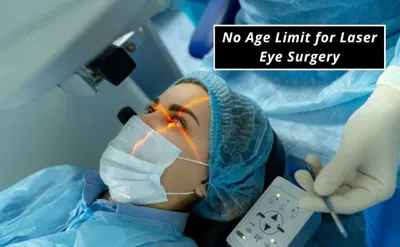Laser Eye Surgery: Understanding Modern Vision Correction
Laser eye surgery provides a solution for correcting vision issues such as nearsightedness and astigmatism. Discover how procedures like LASIK can improve your sight and reduce the need for glasses or contacts.

Understanding Laser Eye Surgery
Laser eye surgery is a medical procedure that uses a high-precision laser to reshape the cornea, improving vision and reducing dependency on glasses or contact lenses. The most commonly performed type of laser eye surgery is LASIK (Laser-Assisted In Situ Keratomileusis). This procedure is effective for addressing conditions like nearsightedness, farsightedness, and astigmatism. By altering the shape of the cornea, LASIK helps focus light directly onto the retina, resulting in clearer vision. The surgery is typically quick, often taking only a few minutes per eye, and is performed under local anesthesia, allowing patients to return home shortly after the procedure.
Benefits of Laser Eye Surgery
Laser eye surgery offers significant improvements in quality of life for many individuals. Some of the primary benefits include:
· Reduced Need for Corrective Eyewear: A dramatic reduction or complete elimination of the need for glasses or contacts, which enhances personal convenience, boosts confidence, and allows for a wider range of activities without worrying about losing or damaging eyewear.
· Swift Recovery: Many patients experience improved vision immediately or within a few days, allowing for a quick return to daily activities.
· Customization and Precision: Advances in technology have made these surgeries highly precise and customizable, addressing individual visual needs and conditions.

Potential Risks and Considerations
As with any surgical procedure, laser eye surgery carries some risks and potential complications. Common side effects include:
· Dry eyes
· Glare
· Halos around lights
· Fluctuating vision
While severe complications are rare, it's essential for individuals considering surgery to undergo a thorough evaluation by a qualified eye surgeon. Factors such as corneal thickness, eye health, and the stability of vision prescriptions are crucial in determining suitability for the procedure. Patients should discuss the potential risks and benefits with their healthcare provider to make an informed decision.
The LASIK Procedure
During a LASIK procedure, the ophthalmologist:
1. Uses a specialized laser to create a thin flap in the cornea.
2. Gently lifts the flap to access the underlying corneal tissue.
3. Uses an excimer laser to reshape the cornea by removing a pre-determined amount of tissue.
4. Repositions the flap, which acts as a natural bandage to help the eye heal faster.
The procedure is relatively pain-free due to numbing drops applied beforehand. Most patients experience improved vision either immediately or by the following day.
Recovery and Post-operative Care
Recovery from laser eye surgery is typically swift, but post-operative care is crucial for optimal results. Patients are generally advised to:
· Use prescribed eye drops to prevent infection and inflammation.
· Avoid straining their eyes and protect them from sunlight, dust, and smoke.
· Follow up with regular check-ups to monitor healing and address any concerns.
Many patients return to normal activities within a day or two, and adherence to post-operative guidelines enhances the recovery process, ensuring long-term benefits of clearer vision.
Featured Articles
 The Life-Changing Benefits of Laser Eye SurgeryImagine waking up in the morning and seeing the world with crystal-clear vision, without the need for glasses or contact lenses. For millions of people across the United States, this dream has become a reality thanks to laser eye surgery. With advancements in medical technology, laser vision correction has become a safe, effective, and long-term solution for those struggling with nearsightedness, farsightedness, and astigmatism.
The Life-Changing Benefits of Laser Eye SurgeryImagine waking up in the morning and seeing the world with crystal-clear vision, without the need for glasses or contact lenses. For millions of people across the United States, this dream has become a reality thanks to laser eye surgery. With advancements in medical technology, laser vision correction has become a safe, effective, and long-term solution for those struggling with nearsightedness, farsightedness, and astigmatism. Is Laser Eye Surgery Right for You? Schedule a ConsultationTake the laser vision correction self-test and get the best vision correction. Schedule a consultation today. Find a clinic near you! Experienced doctors. Convenient locations.
Is Laser Eye Surgery Right for You? Schedule a ConsultationTake the laser vision correction self-test and get the best vision correction. Schedule a consultation today. Find a clinic near you! Experienced doctors. Convenient locations. Ratgeber zu den Vorteilen der Laser-AugenoperationErfahren Sie, wie eine Laser-Augenoperation Ihr Sehvermögen verbessern kann. Entdecken Sie die vielfältigen Vorteile dieser fortschrittlichen Technik für Ihre Augengesundheit.
Ratgeber zu den Vorteilen der Laser-AugenoperationErfahren Sie, wie eine Laser-Augenoperation Ihr Sehvermögen verbessern kann. Entdecken Sie die vielfältigen Vorteile dieser fortschrittlichen Technik für Ihre Augengesundheit.